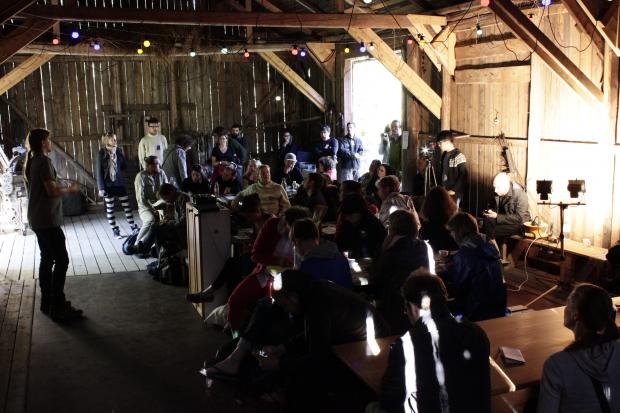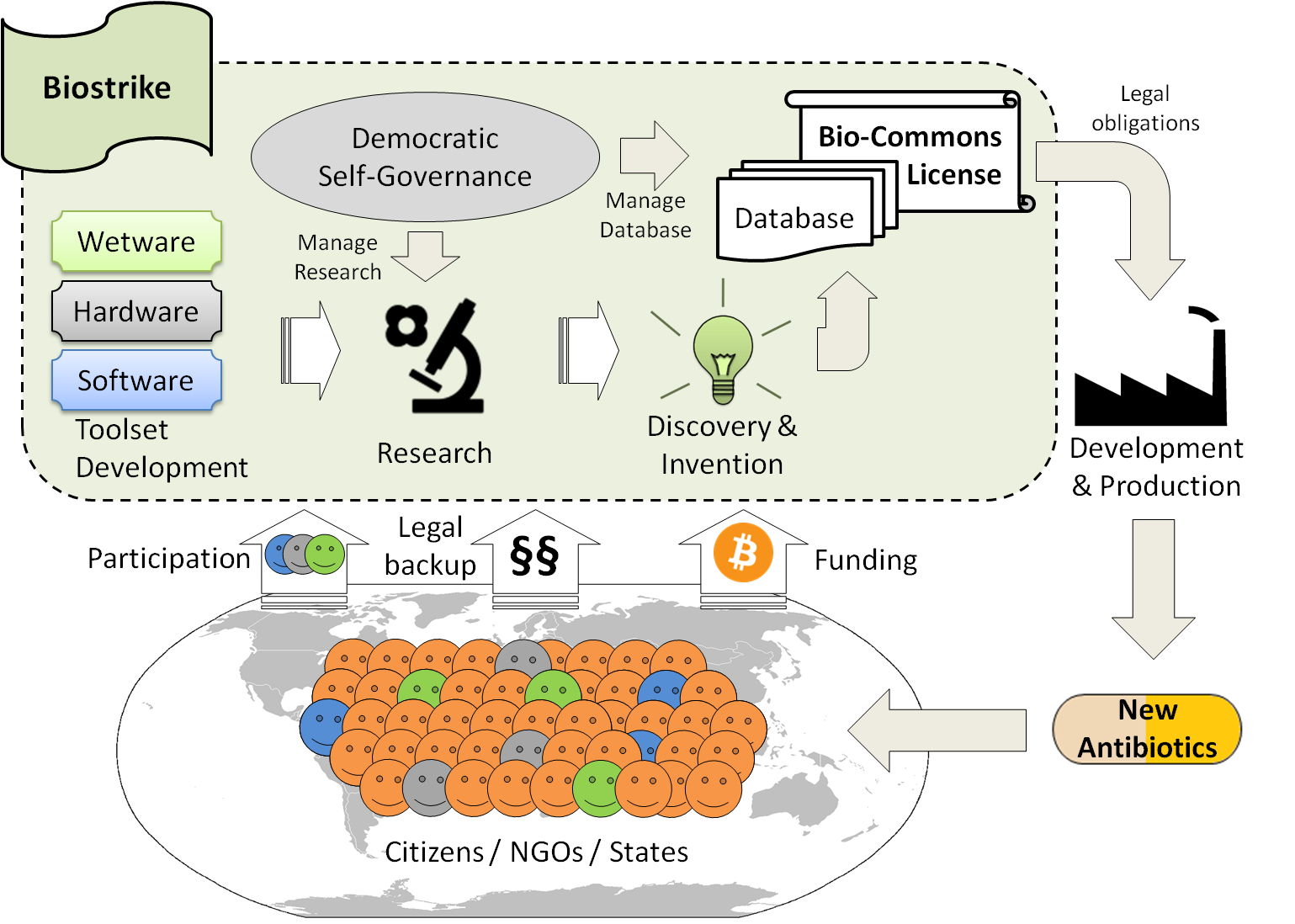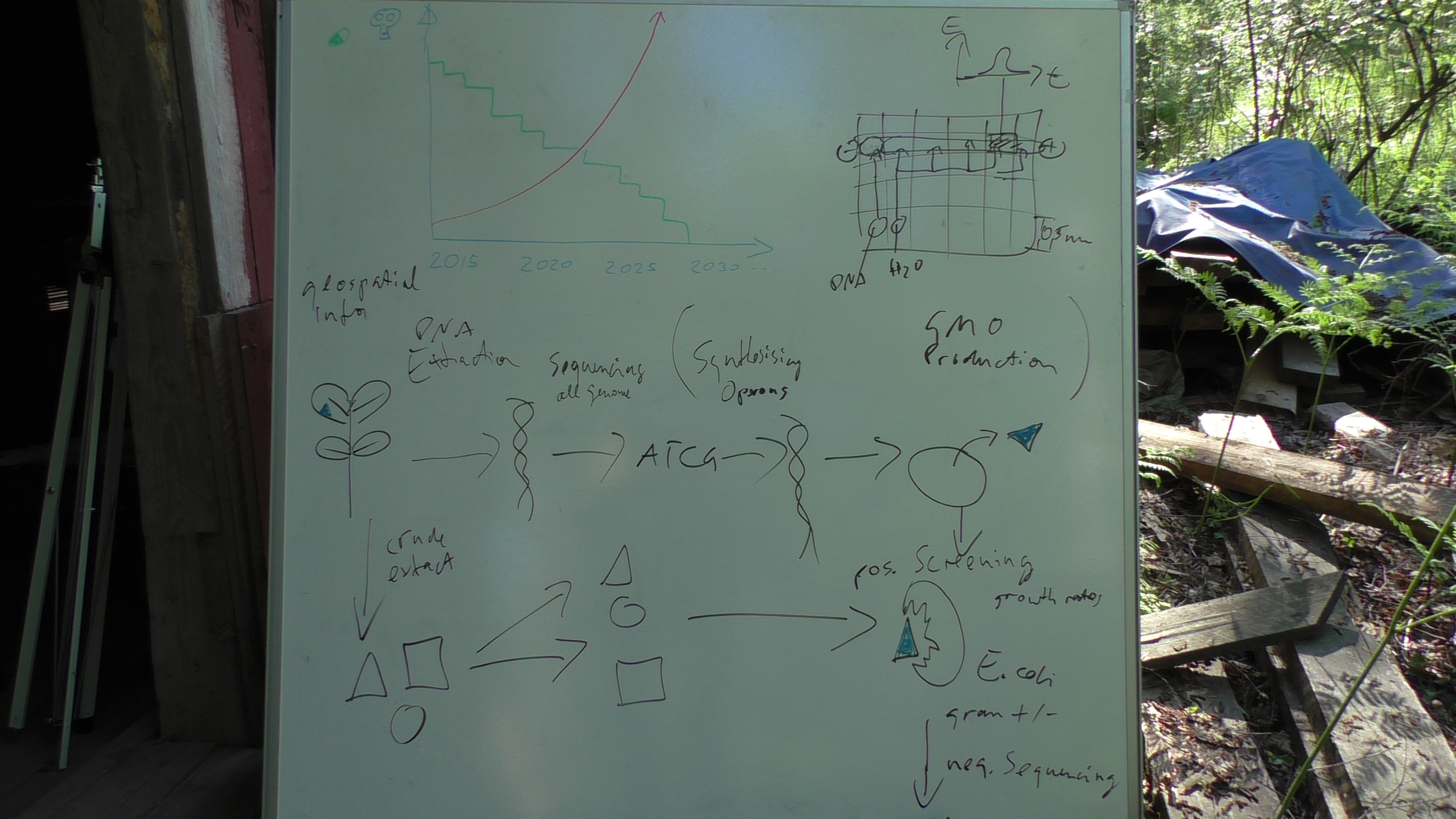
Biocommons - Pixelache Festival, Helsinki, June 2014
Submitted by Ruediger Trojok on
Alternative IP regimes such as open-access and open-source could in future help to leverage the cost for research and development in the life sciences, mobilize unused knowledge and become more adaptable to spark new inventions. At the Pixelache Unconference in Helsinki, June 2014, a scenario thinking workshop on BioCommons was held to identify the requirements and conditions of Open-Source and Citizen-Science concepts to realize Responsible Research and Innovation (RRI) in the Life Sciences. Citizens proposed a ‘Biocommons’ license model to put biological innovation into service to society and at the same time limit the potential misuse of knowledge and material. Taking the antibiotic resistance problem as an example, this whitepaper aims to demonstrate the necessity and feasibility of a Biocommons approach.
The reason for an exacerbation of the antibiotics problem into an antibiotics crisis is a market failure due to a lack of financial incentives for the pharmaceutical industry to develop new drugs like antibiotics with a small profit margin. Citizens thought of three possible scenarios of how to detect antibiotic substances from samples collected in the field. In a citizen science project dubbed ‘Biostrike’, people around the globe could contribute to the solution to the antibiotics problem by raising awareness on the issue.
Citizens and Scientists could participate in a global community around Biostrike, collaborating to find new antibiotics. Specialists from all fields of expertise could put together their knowledge to build the tool sets – that is wetware, hardware and software - to enable decentralized research on antibiotics. The Biocommons license could make licensing of innovation and discovery easier for researchers and thereby stabilize global collaborations that will help overcome market failure situations as they exist in antibiotics research. A widely accepted regulatory framework would be required to provide legal security and reliability as well as equal, transparent, and fair terms for all participants. Before creating a legal framework for the Biocommons, the social relations and assumptions underlying an idea of the Biocommons need to be addressed. Opening up the Bio-Commons discussion and introducing democratic decision making will make everybody a stakeholder. To successfully initiate a broader discussion about the underlying principles for the Biocommons, a mutually understandable bio-language is needed that adequately describes the biological reality in digital form. The development of this bio-language in turn opens the possibility for responsible research and innovation already at the earliest stages in the development of a new living system. Citizens also looked for technical solutions and defined a number of requirements for software to handle the data generated under a Bio-Commons license. It was thought that the blockchain technology could in future comprise the info infrastructure for the Biocommons. Digital Biology was considered the first time as a platform technology to automate biological research.
Idea sketch on how to use digital biology to solve the antibiotic crisis


